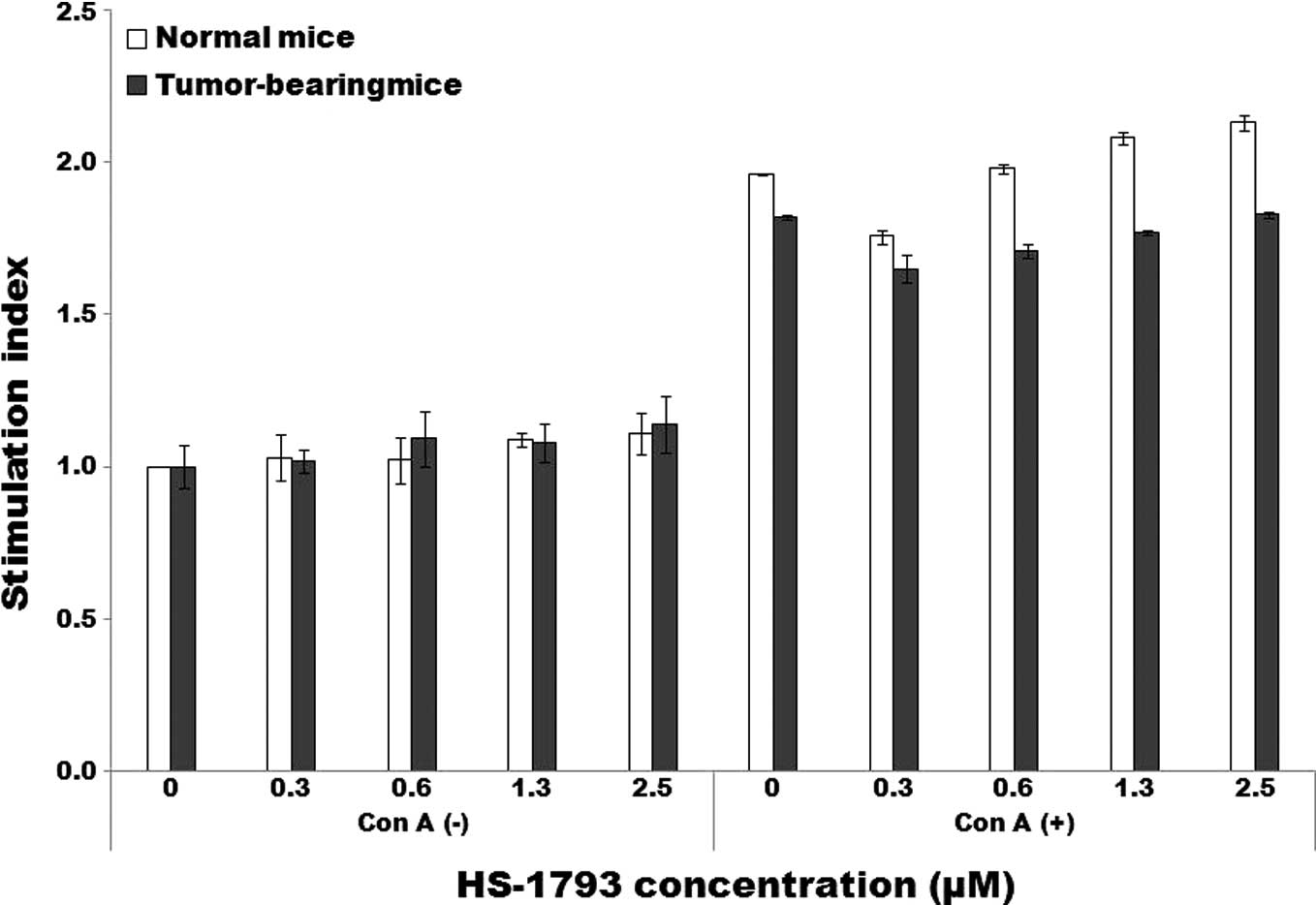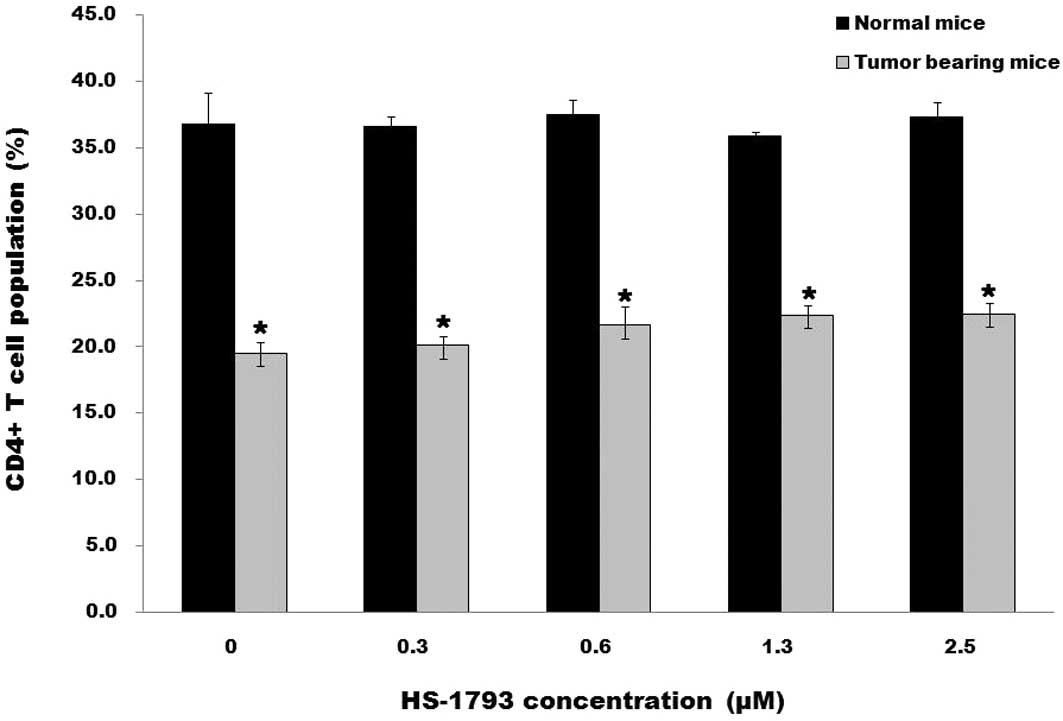|
1.
|
Grivennikov SI, Greten FR and Karin M:
Immunity, inflammation, and cancer. Cell. 140:883–899. 2010.
View Article : Google Scholar
|
|
2.
|
Raza SA, Clifford GM and Franceschi S:
Worldwide variation in the relative importance of hepatitis B and
hepatitis C viruses in hepatocellular carcinoma: a systematic
review. Br J Cancer. 96:1127–1134. 2007. View Article : Google Scholar : PubMed/NCBI
|
|
3.
|
Odunsi K and Old LJ: Tumor infiltrating
lymphocytes: indicators of tumor-related immune responses. Cancer
Immun. 7:32007.PubMed/NCBI
|
|
4.
|
Zou W: Immunosuppressive networks in the
tumour environment and their therapeutic relevance. Nat Rev Cancer.
5:263–274. 2005. View
Article : Google Scholar : PubMed/NCBI
|
|
5.
|
Yu P and Fu YX: Tumor-infiltrating T
lymphocytes: friends or foes? Lab Invest. 86:231–245. 2006.
View Article : Google Scholar : PubMed/NCBI
|
|
6.
|
Zou W: Regulatory T cells, tumour immunity
and immunotherapy. Nat Rev Immunol. 6:295–307. 2006. View Article : Google Scholar : PubMed/NCBI
|
|
7.
|
Beyer M and Schultze JL: Regulatory T
cells in cancer. Blood. 108:804–811. 2006. View Article : Google Scholar : PubMed/NCBI
|
|
8.
|
Schabowsky RH, Madireddi S, Sharma R,
Yolcu ES and Shirwan H: Targeting
CD4+CD25+FoxP3+ regulatory T-cells
for the augmentation of cancer immunotherapy. Curr Opin Investig
Drugs. 8:1002–1008. 2007.
|
|
9.
|
Leon K, Garcia K, Carneiro J and Lage A:
How regulatory CD25+CD4+ T cells impinge on
tumor immunobiology: the differential response of tumors to
therapies. J Immunol. 179:5659–5668. 2007.PubMed/NCBI
|
|
10.
|
Curiel TJ: Regulatory T cells and
treatment of cancer. Curr Opin Immunol. 20:241–246. 2008.
View Article : Google Scholar
|
|
11.
|
Liu Z, Kim JH, Falo LD Jr and You Z: Tumor
regulatory T cells potently abrogate antitumor immunity. J Immunol.
182:6160–6167. 2009. View Article : Google Scholar : PubMed/NCBI
|
|
12.
|
Malmberg KJ: Effective immunotherapy
against cancer: a question of overcoming immune suppression and
immune escape? Cancer Immunol Immunother. 53:879–892. 2004.
View Article : Google Scholar : PubMed/NCBI
|
|
13.
|
Jang M, Cai L, Udeani GO, Slowing KV,
Thomas CF, Beecher CW, Fong HH, Farnsworth NR, Kinghorn AD, Mehta
RG, Moon RC and Pezzuto JM: Cancer chemopreventive activity of
resveratrol, a natural product derived from grapes. Science.
275:218–220. 1997. View Article : Google Scholar : PubMed/NCBI
|
|
14.
|
Aggarwal BB, Bhardwaj A, Aggarwal RS,
Seeram NP, Shishodia S and Takada Y: Role of resveratrol in
prevention and therapy of cancer: preclinical and clinical studies.
Anticancer Res. 24:2783–2840. 2004.PubMed/NCBI
|
|
15.
|
Bove K, Lincoln DW and Tsan MF: Effect of
resveratrol on growth of 4T1 breast cancer cells in vitro and in
vivo. Biochem Biophys Res Commun. 291:1001–1005. 2002. View Article : Google Scholar : PubMed/NCBI
|
|
16.
|
Feng YH, Zhou WL, Wu QL, Li XY, Zhao WM
and Zou JP: Low dose of resveratrol enhanced immune response of
mice. Acta Pharmacol Sin. 23:893–897. 2002.PubMed/NCBI
|
|
17.
|
Song S, Lee H, Jin Y, Ha YM, Bae S, Chung
HY and Suh H: Syntheses of hydroxy substituted
2-phenyl-naphthalenes as inhibitors of tyrosinase. Bioorg Med Chem
Lett. 17:461–464. 2007. View Article : Google Scholar : PubMed/NCBI
|
|
18.
|
Jeong SH, Jo WS, Song S, Suh H, Seol SY,
Leem SH, Kwon TK and Yoo YH: A novel resveratrol analog, HS-1793,
overcomes the resistance conferred by Bcl-2 in human leukemic U937
cells. Biochem Pharmacol. 7:1337–1347. 2009. View Article : Google Scholar
|
|
19.
|
Yang Y, Paik JH, Cho D, Cho JA and Kim CW:
Resveratrol induces the suppression of tumor-derived
CD4+CD25+ regulatory T cells. Int
Immunopharmacol. 8:542–547. 2008. View Article : Google Scholar : PubMed/NCBI
|
|
20.
|
Itoh M, Takahashi T, Sakaguchi N, Kuniyasu
Y, Shimizu J, Otsuka F and Sakaguchi S: Thymus and autoimmunity:
production of CD25+CD4+ naturally anergic and
suppressive T cells as a key function of the thymus in maintaining
immunologic self-tolerance. J Immunol. 162:5317–5326.
1999.PubMed/NCBI
|
|
21.
|
Takahashi T, Kuniyasu Y, Toda M, Sakaguchi
N, Itoh M, Iwata M, Shimizu J and Sakaguchi S: Immunologic
self-tolerance maintained by CD25+CD4+
naturally anergic and suppressive T cells: induction of autoimmune
disease by breaking their anergic/suppressive state. Int Immunol.
10:1969–1980. 1998.
|
|
22.
|
De la Rosa M, Rutz S, Dorninger H and
Scheffold A: Interleukin-2 is essential for
CD25+CD4+ regulatory T cell function. Eur J
Immunol. 34:2480–2488. 2004.PubMed/NCBI
|
|
23.
|
Furtado GC, Curotto de Lafaille MA,
Kutchukhidze N and Lafaille JJ: Interleukin 2 signaling is required
for CD4+ regulatory T cell function. J Exp Med. 196:851–857.
2002.
|
|
24.
|
Yao Z, Kanno Y, Kerenyi M, Stephens G,
Durant L, Watford WT, Laurence A, Robinson GW, Shevach EM, Moriggl
R, Hennighausen L, Wu C and O’Shea JJ: Nonredundant roles for
Stat5a/b in directly regulating Foxp3. Blood. 109:4368–4375. 2007.
View Article : Google Scholar : PubMed/NCBI
|
|
25.
|
Valérie D, Amit A, Hyoung K, George G,
Wenda G, Raymond AS, Meike M, Terry BS, Wassim E, I-Cheng H, Samia
K, Mohamed O and Vijay KK: IL-4 inhibits TGF-b-induced
Foxp3+ T cells and, together with TGF-b, generates
IL-9+ IL-10+ Foxp3-effector T cells. Nat
Immunol. 9:1347–1355. 2008.
|
|
26.
|
Dudley ME, Wunderlich JR, Robbins PF, et
al: Cancer regression and autoimmunity in patients after clonal
repopulation with antitumor lymphocytes. Science. 298:850–854.
2002. View Article : Google Scholar : PubMed/NCBI
|
|
27.
|
Turk MJ, Guevara-Patino JA, Rizzuto GA,
Engelhorn ME and Houghton AN: Concomitant tumor immunity to a
poorly immunogenic melanoma is prevented by regulatory T cells. J
Exp Med. 200:771–782. 2004. View Article : Google Scholar : PubMed/NCBI
|
|
28.
|
Alpan O, Bachelder E, Isil E, Arnheiter H
and Matzinger P: ‘Educated’ dendritic cells act as messengers from
memory to naive T helper cells. Nat Immunol. 5:615–622. 2004.
|
|
29.
|
Bourgeois C, Rocha B and Tanchot C: Arole
for CD40 expression on CD8+ T cells in the generation of
CD8+ T cell memory. Science. 297:2060–2063.
2002.PubMed/NCBI
|
|
30.
|
Xiaoyu H and Lionel BL: Cross-regulation
of signaling pathway by interferon-γ: implication for immune
response and auto-immune diseases. Immunity. 31:593–550. 2009.
|
|
31.
|
Park YS, Bae JH, Son CH, Lee KS, Kim W,
Jung MH, Yang K, Kim SH and Kang CD: Cyclophosphamide potentiates
the antitumor effect of immunization with injection of immature
dendritic cells into irradiated tumor. Immunol Invest. 40:383–399.
2011. View Article : Google Scholar : PubMed/NCBI
|
|
32.
|
Liyanage UK, Moore TT, Joo HG, Tanaka Y,
Herrmann V, Doherty G, Drebin JA, Strasberg SM, Eberlein TJ,
Goedegebuure PS and Linehan DC: Prevalence of regulatory T cells is
increased in peripheral blood and tumor microenvironment of
patients with pancreas or breast adenocarcinoma. J Immunol.
169:2756–2761. 2002. View Article : Google Scholar : PubMed/NCBI
|
|
33.
|
Perez SA, Karamouzis MV, Skarlos DV,
Ardavanis A, Sotiriadou NN, Iliopoulou EG, Salagianni ML, Orphanos
G, Baxevanis CN, Rigatos G and Papamichail M:
CD4+CD25+ regulatory T-cell frequency in
HER-2/neu (HER)-positive and HER-negative advanced-stage breast
cancer patients. Clin Cancer Res. 13:2714–2721. 2007.PubMed/NCBI
|
|
34.
|
Knutson KL, Dang Y, Lu H, Lukas J, Almand
B, Gad E and Disis ML: IL-2 immunotoxin therapy modulates
tumor-associated regulatory T cells and leads to lasting
immune-mediated rejection of breast cancers in neu-transgenic mice.
J Immunol. 177:84–91. 2006. View Article : Google Scholar
|












